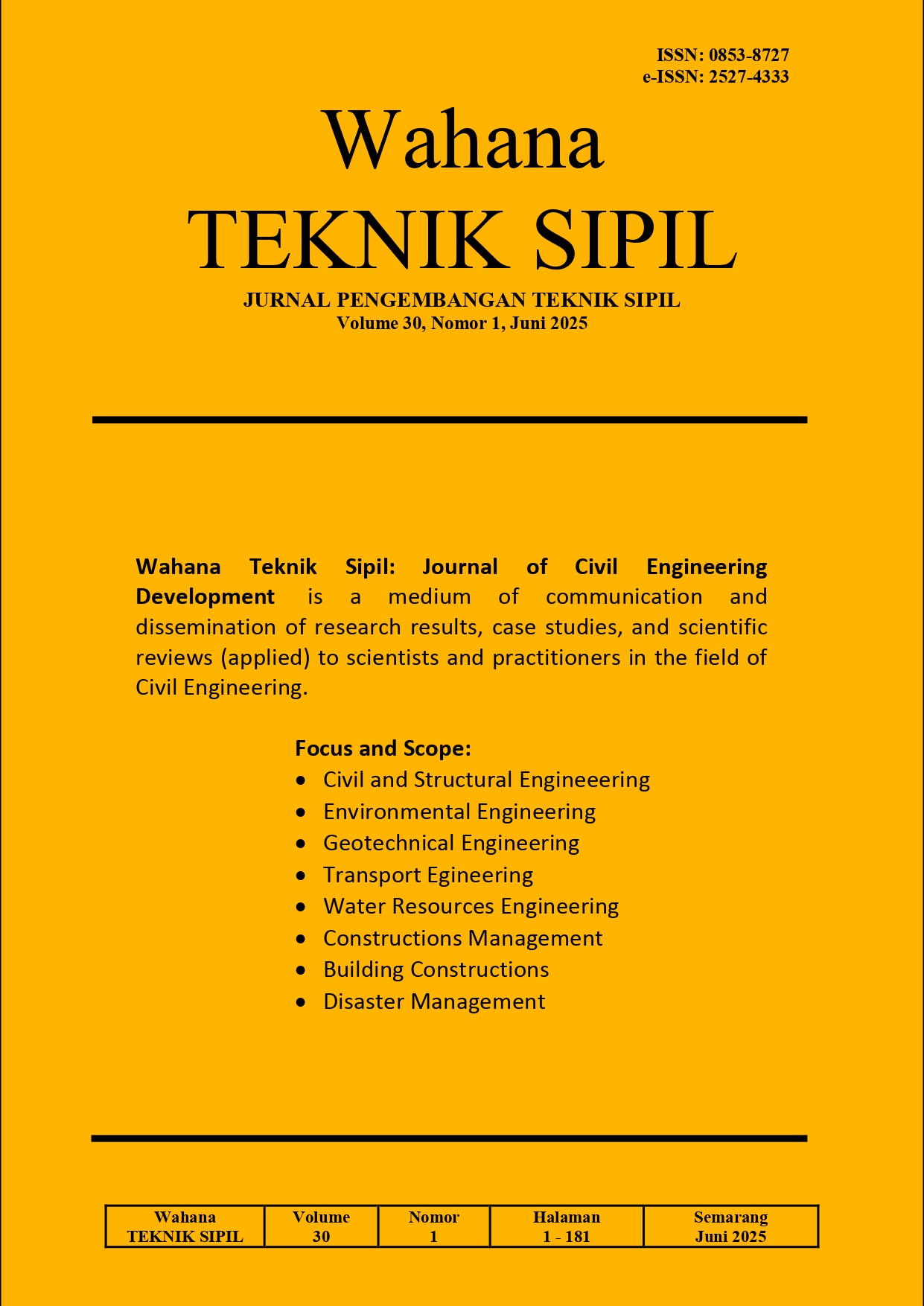TINJAUAN PENGARUH PENAMBAHAN SERAT POLYPROPYLENE DAN PEMANFAATAN BETON ULTRA HIGH PERFORMANCE TERHADAP KETAHANAN ABRASI BETON
DOI:
https://doi.org/10.32497/wahanats.v30i1.6685Abstract
Concrete is a material that is widely used in the construction process, proven in various sectors widely used such as foundation construction, building structures, road pavements and water channels. However, concrete still has many weaknesses in abrasion resistance. To improve the quality of concrete abrasion resistance, the addition of Polypropylene fibers and the use of Ultra High Performance Concrete (UHPC) can be used. The fibers used in the study used Polypropylene fibers and the compressive strength of concrete with the UHPC method was planned to be more than 80 MPa. Mix planning was carried out using the American Concrete Institute (ACI) method with adjustments from trial and error. Furthermore, testing was carried out and test data was obtained which will be continued with the analysis and discussion process to draw conclusions. This study is intended to test the abrasion resistance of UHPC concrete with the addition of 0.2, 0.4, 0.6 polypropylene fibers, with the pressurized water spray method at the age of 28 days. The test results showed 0.351%, 0.284%, 0.369%.
Downloads
Published
Issue
Section
License

This work is licensed under a Creative Commons Attribution 4.0 International License.
Authors who publish with this journal agree to the following terms:Authors retain copyright and grant the journal right of first publication with the work simultaneously licensed under a Creative Commons Attribution License that allows others to share the work with an acknowledgement of the work's authorship and initial publication in this journal.
Authors are able to enter into separate, additional contractual arrangements for the non-exclusive distribution of the journal's published version of the work (e.g., post it to an institutional repository or publish it in a book), with an acknowledgement of its initial publication in this journal.
Authors are permitted and encouraged to post their work online (e.g., in institutional repositories or on their website) prior to and during the submission process, as it can lead to productive exchanges, as well as earlier and greater citation of published work (See The Effect of Open Access).






